Abstract
The biological factors important in the penetration of Escherichia coli through anaerobic, nutrient-saturated, Ottawa sand-packed cores were studied under static conditions. In cores saturated with galactose-peptone medium, motile strains of E. coli penetrated four times faster than mutants defective only in flagellar synthesis. Motile, nonchemotactic mutants penetrated the cores faster than did the chemotactic parental strain. This, plus the fact that a chemotactic galactose mutant penetrated cores saturated with peptone medium at the same rate with or without a galactose gradient, indicates that chemotaxis may not be required for bacterial penetration through unconsolidated porous media. The effect of gas production on bacterial penetration was studied by using motile and nonmotile E. coli strains together with their respective isogenic non-gas-producing mutants. No differences were observed between the penetration rates of the two motile strains through cores saturated with peptone medium with or without galactose. However, penetration of both nonmotile strains was detected only with galactose. The nonmotile, gas-producing strain penetrated cores saturated with galactose-peptone medium five to six times faster than did the nonmotile, non-gas-producing mutant, which indicates that gas production is an important mechanism for the movement of nonmotile bacteria through unconsolidated porous media. For motile strains, the penetration rate decreased with increasing galactose concentrations in the core and with decreasing inoculum sizes. Also, motile strains with the faster growth rates had faster penetration rates. These results imply that, for motile bacteria, the penetration rate is regulated by the in situ bacterial growth rate.(ABSTRACT TRUNCATED AT 250 WORDS)
Full text
PDF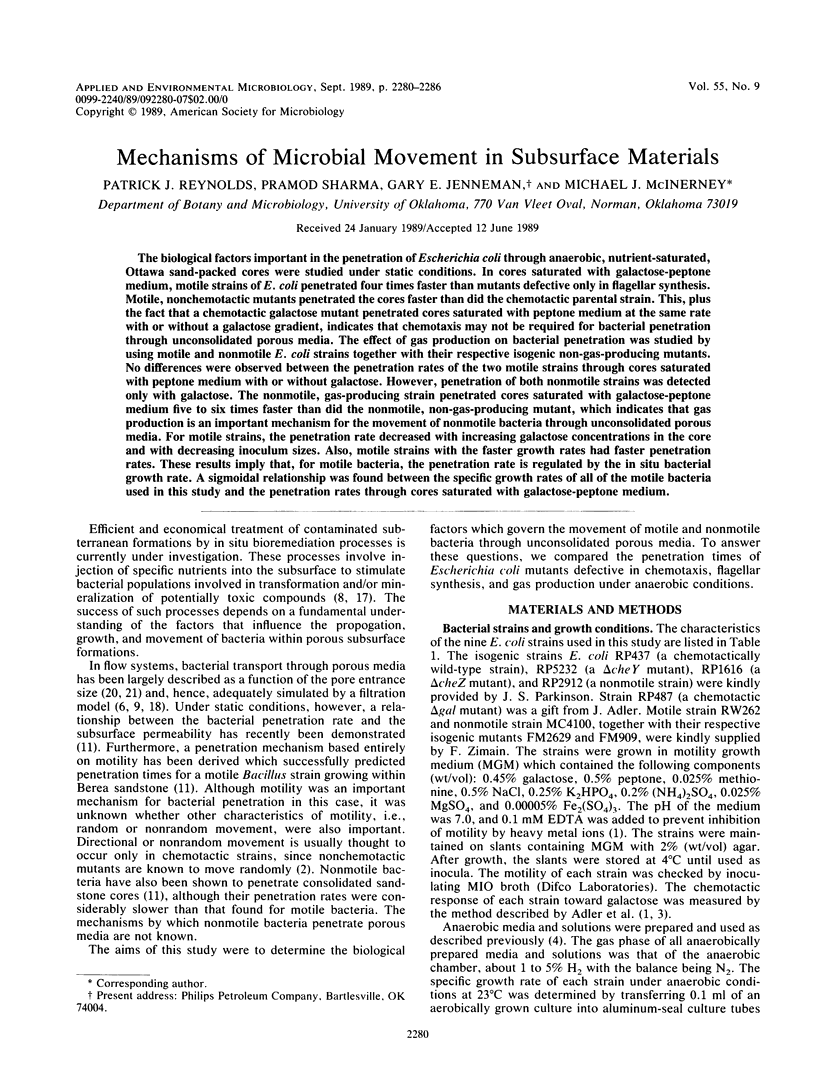
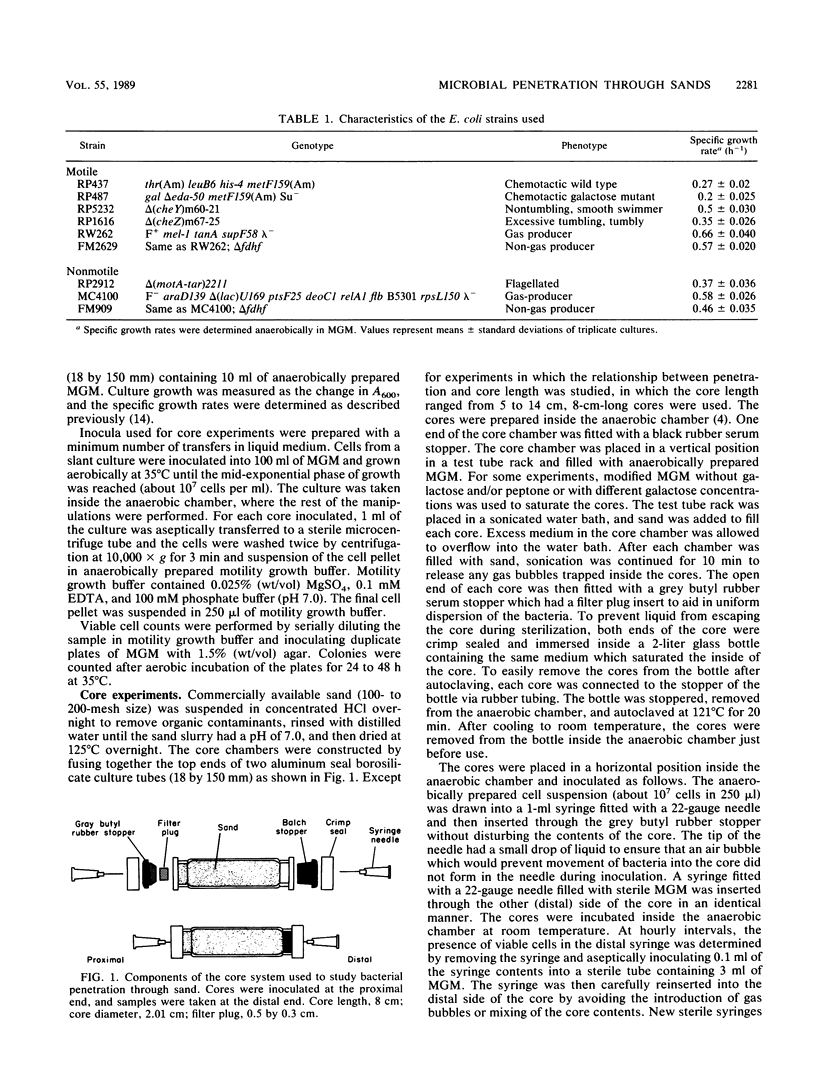
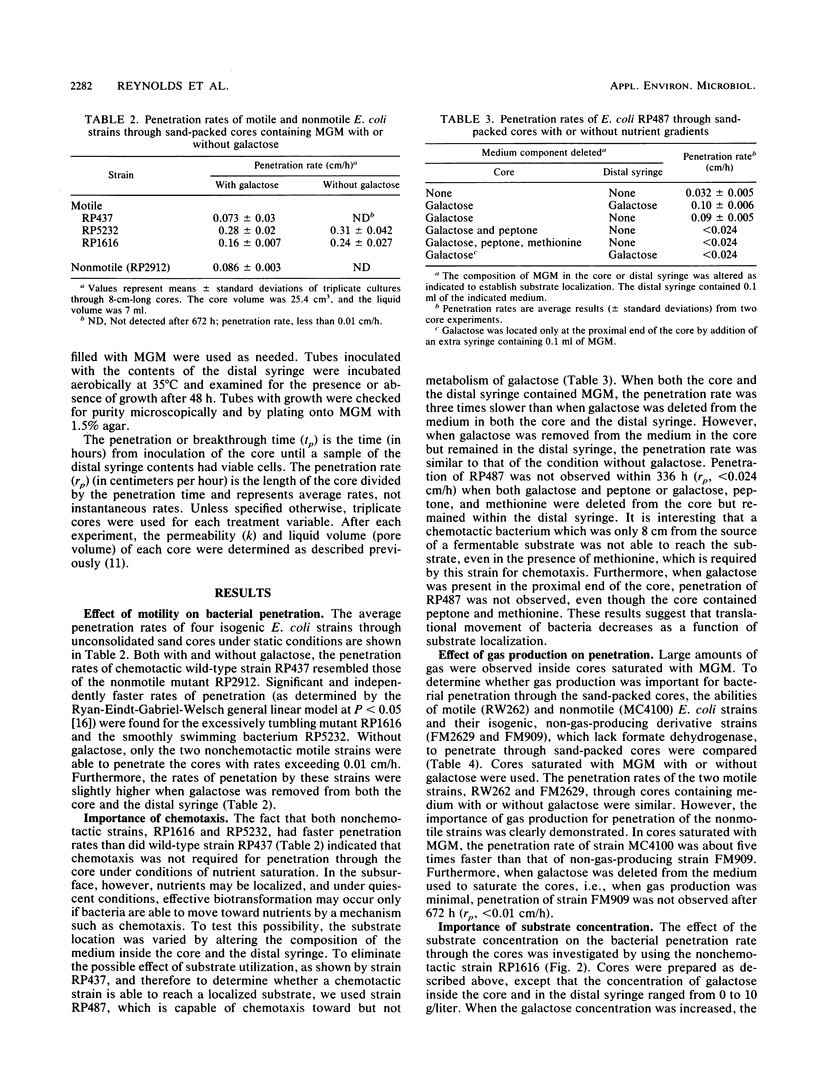
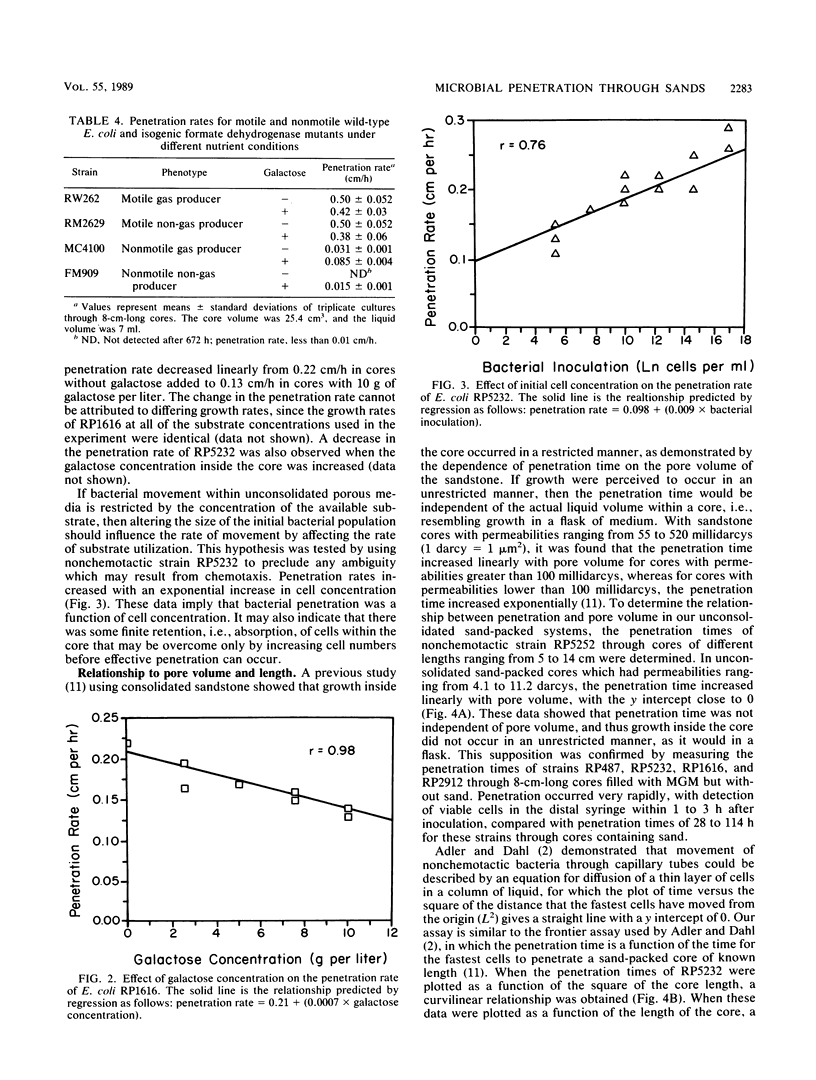
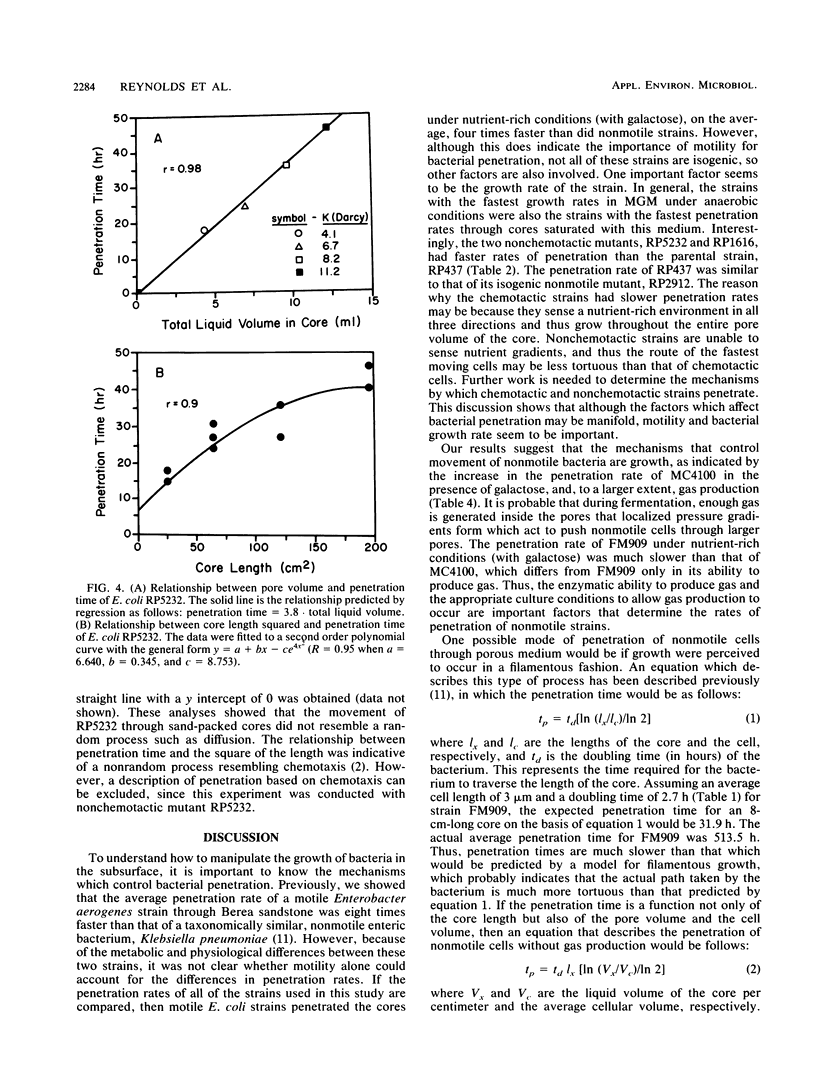
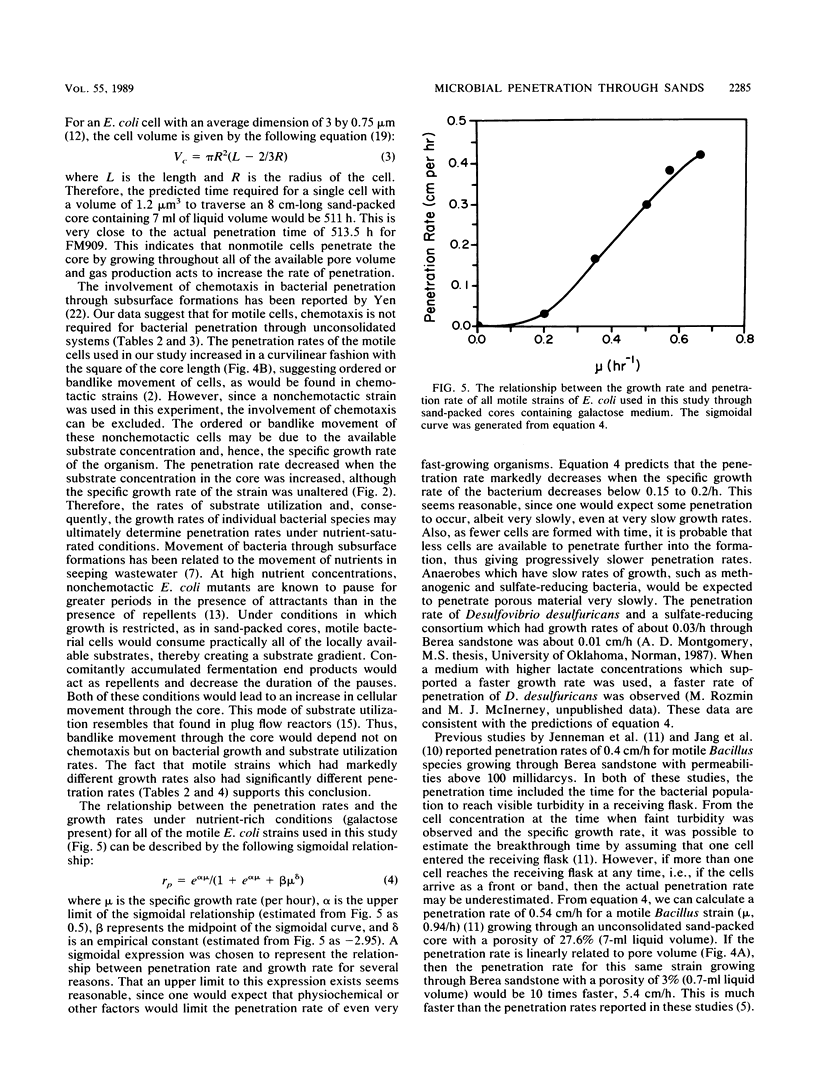
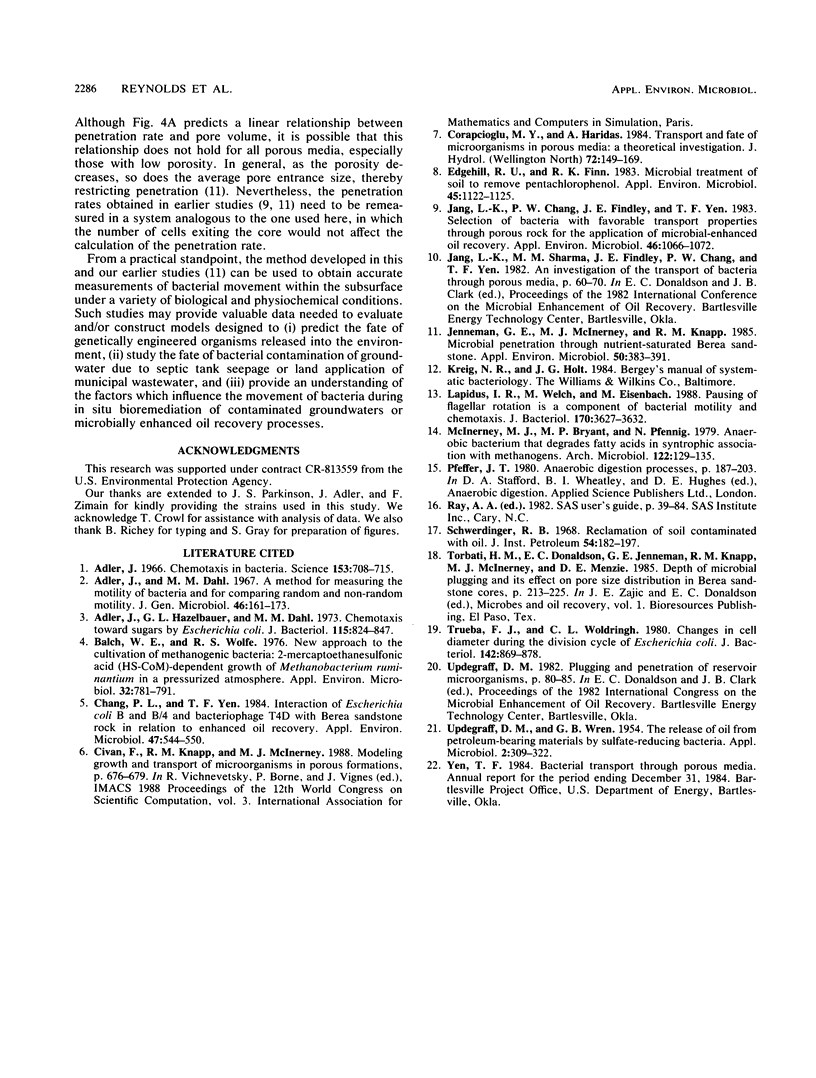
Selected References
These references are in PubMed. This may not be the complete list of references from this article.
- Adler J. Chemotaxis in bacteria. Science. 1966 Aug 12;153(3737):708–716. doi: 10.1126/science.153.3737.708. [DOI] [PubMed] [Google Scholar]
- Adler J., Dahl M. M. A method for measuring the motility of bacteria and for comparing random and non-random motility. J Gen Microbiol. 1967 Feb;46(2):161–173. doi: 10.1099/00221287-46-2-161. [DOI] [PubMed] [Google Scholar]
- Adler J., Hazelbauer G. L., Dahl M. M. Chemotaxis toward sugars in Escherichia coli. J Bacteriol. 1973 Sep;115(3):824–847. doi: 10.1128/jb.115.3.824-847.1973. [DOI] [PMC free article] [PubMed] [Google Scholar]
- Balch W. E., Wolfe R. S. New approach to the cultivation of methanogenic bacteria: 2-mercaptoethanesulfonic acid (HS-CoM)-dependent growth of Methanobacterium ruminantium in a pressureized atmosphere. Appl Environ Microbiol. 1976 Dec;32(6):781–791. doi: 10.1128/aem.32.6.781-791.1976. [DOI] [PMC free article] [PubMed] [Google Scholar]
- Chang P. L., Yen T. F. Interaction of Escherichia coli B and B/4 and Bacteriophage T4D with Berea Sandstone Rock in Relation to Enhanced Oil Recovery. Appl Environ Microbiol. 1984 Mar;47(3):544–550. doi: 10.1128/aem.47.3.544-550.1984. [DOI] [PMC free article] [PubMed] [Google Scholar]
- Edgehill R. U., Finn R. K. Microbial treatment of soil to remove pentachlorophenol. Appl Environ Microbiol. 1983 Mar;45(3):1122–1125. doi: 10.1128/aem.45.3.1122-1125.1983. [DOI] [PMC free article] [PubMed] [Google Scholar]
- Jang L. K., Chang P. W., Findley J. E., Yen T. F. Selection of bacteria with favorable transport properties through porous rock for the application of microbial-enhanced oil recovery. Appl Environ Microbiol. 1983 Nov;46(5):1066–1072. doi: 10.1128/aem.46.5.1066-1072.1983. [DOI] [PMC free article] [PubMed] [Google Scholar]
- Jenneman G. E., McInerney M. J., Knapp R. M. Microbial Penetration through Nutrient-Saturated Berea Sandstone. Appl Environ Microbiol. 1985 Aug;50(2):383–391. doi: 10.1128/aem.50.2.383-391.1985. [DOI] [PMC free article] [PubMed] [Google Scholar]
- Lapidus I. R., Welch M., Eisenbach M. Pausing of flagellar rotation is a component of bacterial motility and chemotaxis. J Bacteriol. 1988 Aug;170(8):3627–3632. doi: 10.1128/jb.170.8.3627-3632.1988. [DOI] [PMC free article] [PubMed] [Google Scholar]
- Trueba F. J., Woldringh C. L. Changes in cell diameter during the division cycle of Escherichia coli. J Bacteriol. 1980 Jun;142(3):869–878. doi: 10.1128/jb.142.3.869-878.1980. [DOI] [PMC free article] [PubMed] [Google Scholar]
- UPDEGRAFF D. M., WREN G. B. The release of oil from petroleum-bearing materials by sulfate-reducing bacteria. Appl Microbiol. 1954 Nov;2(6):309–322. doi: 10.1128/am.2.6.309-322.1954. [DOI] [PMC free article] [PubMed] [Google Scholar]


